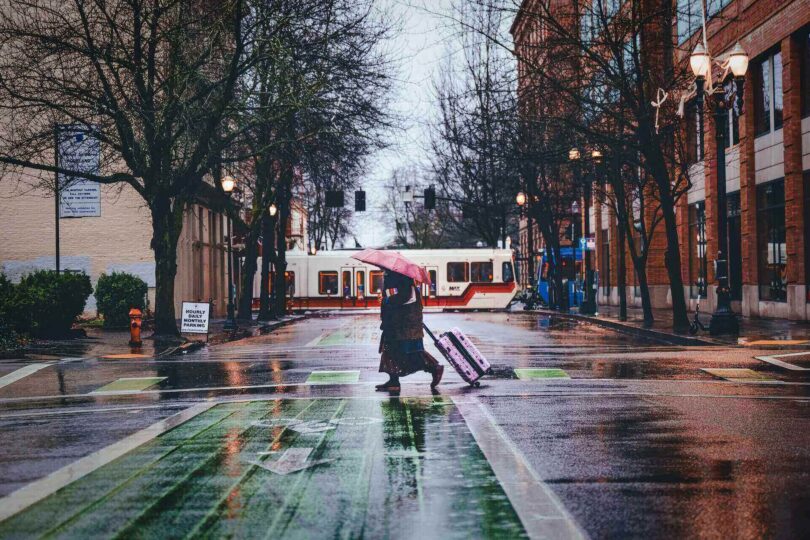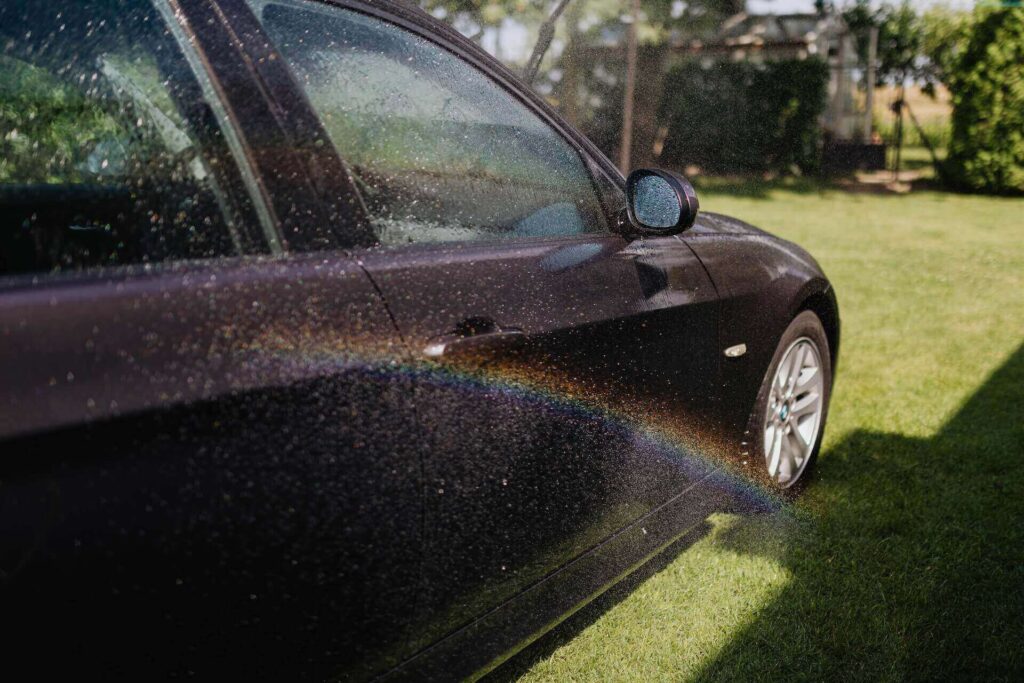It’s that time of year again when the weatherman is always predicting rain but you never know what to expect until it starts pouring. If you’re moving in the rain, don’t worry – we’ve got some tips that will make your move easy and stress-free.


Moving stuff in the rain is neither enjoyable nor advised. But even when cross-country movers are scheduled months in advance, there is not much they can do to influence the weather. Of course, we have the option of relocating during the summer rather than in the more humid months during the winter or autumn or avoiding the hurricane season entirely, but occasionally a sudden deluge surprises us. However, there are some techniques, along with specialized types of packing materials and some handy household items that will ensure a safe move.
So, the question is – do moving companies move in the rain? They do, and if you must prepare for cross-country moving during a rainstorm, it is important to prepare for movers with the proper equipment. First and foremost, make sure that you have plenty of tarps to cover your belongings.
This will protect and keep them dry. You will also need to have a rope or bungee cords to secure the tarps. If possible, try to find a friend or family member who can help you with the move so that you can have an extra set of hands. Also, be sure to protect yourself with the following:
The following video might be of great help, as it shares secrets on how to stay dry while backpacking.
Most people finish packing without thinking about placing items in baskets, like hanging clothes. They intend to cover a clothes rack with a sheet and roll it into a relocation vehicle. Arrangements like these should be revised when it starts to rain. Ideally, electronics and other items that can be harmed by moisture should be covered. Wrapping products that don’t go into boxes with plastic is a typical solution.
Many long-distance movers have shrink wrap on hand, which helps shield furniture from light precipitation. Consider using household objects to protect furniture and other items if you are relocating yourself or your movers will charge a fee for this service. Keeping this in mind, cotton bedding is not nearly as water-resistant as plastic, so using any kind of plastic wrap might be your best bet.
You should pack clothes in trash bags. Separate the clothing of each family member, but don’t bother about preserving them folded and keeping them from wrinkling just now. You may have to wash the items after the move if something gets wet. Garbage bags are a simple way to add an extra degree of security while relocating items like books, clothes, or other household items. Simply place the goods in the sack and move them as usual, reusing the trash bags as necessary. If you want a quick solution, place it over a heap of garments on hangers but cut a hole in the top of the bag.
You can plastic wrap artwork, but keep in mind that you should cover it with some other material first, like packing paper. Ordinary plastic wrap which you can get at the grocery store can be used to wrap items that are on the small side yet are often transported outside of a box. An extra layer of bubble wrap is also recommended. Nonetheless, consider buying shrink wrap if you have the time and funds. If you are transferring priceless objects like antiques or works of art that shouldn’t get wet, it definitely pays off.
You should cover furniture with specialized blankets. While some heavier comforters can temporarily shield furniture from light rain, sheets may not be thick enough to keep the water away. Furniture blankets are made of a water-resistant material that will keep your furniture dry and protected under all conditions. To secure everything, use bungee cords to wrap the heavy cover around the furniture and fasten it in place.
You need a way to pack a relocation truck quickly and efficiently in the rain. We advise assigning one or two movers to stay with the truck in whatever conditions to work on loading everything efficiently. This advice is even more applicable when it is pouring. The fewer individuals who have to walk from point A to point B in the rain, the better. Maintain a few workers at the relocation truck, but organize the entire procedure like an assembly line.
Have one person, for instance, bring the best-sized boxes inside from the shed or another drop-off location, such as the garage. Then, you can delegate the move-out cleaning or packing to others. You may reduce the number of people in the house, the amount of water in the house, and the likelihood of people sliding and falling by establishing stations with clear tasks.
This step is essential if you want to avoid damaging the floors, slipping, or falling when transporting that family antique dresser. To ensure that everything stays as dry as possible for as long as possible, this should also be among the final tasks you do inside until you start moving out for the first time.
However, you shouldn’t be too particular about it because the cardboard will eventually be destroyed by wear and water. Once they begin to saturate, replace them with fresh, dry panels and secure your cardboard route with an adhesive that won’t harm your flooring. This likely means reserving the duct tape for your upcoming endeavor.
The additional relocation hacks for bad weather always come in handy, so here are a few. You should stack the boxes in one location for easy access. If you have a shed or a garage, start unloading your belongings there. If not, create a space for the majority of the objects a few feet inside the house. Transferring these things to the proper rooms can be done by another person with dry shoes.
Additionally, you can incorporate a pop-up tent. This drying station can be set up anywhere, but the end of the relocation truck is the optimum location. So, there will be more room for loading and unloading cargo.
While it is raining heavily, you should focus on transferring sturdy and bulky items. On a rainy day, there are typically lulls when the rain isn’t as intense. However, since you pay the movers by the hour, you can’t wait all day for a break in the rain. Consider carrying the sturdiest goods first, such as plastic containers, during a downpour. Move gadgets, mattresses, or other items as soon as there is a break.

You’ll have less cleanup to perform after the movers have left if you can do more to remove rainfall while you’re relocating. If you have a spare participant, assign them the task of cleaning the water for the day. Ask them to reduce the amount of puddles that form inside both houses. Here are some relocation day tips for controlling excess water:
Use a towel to dry off any extra moisture after loading furniture or boxes into the truck to stop leaks and protect your belongings. These will be useful if someone in your company gets wet when loading the truck. That’s why it’s important to have a stack of different towels on hand.
To protect your devices and appliances from rain damage when carrying and transporting them, it is important to pack all the electronics properly and keep them dry. When packing them, use waterproof bags or wrap them in plastic wrap to keep them dry. You may also want to consider placing everything in a waterproof container, use these types of containers for all your electronics, devices, and appliances. These are some additional pieces of advice:

Let’s face it – relocations are way easier when we have proper and professional assistance, instead of doing everything by ourselves. If you search for “long-distance movers near me” there is a high probability that you will find a reliable long-distance moving company that can help you move during any weather. So, no matter if the sun’s scorching or it’s raining cats and dogs, movers will help you with their long-distance moving services and save you from backbreaking work with their convenient packing services.
Heck, they will even spare you from driving in the bad weather, and ship your car with their secure and safe auto transport service. Their handy wooden crating can also be the needed solution for humid weather. And if you’re happy with the job your movers did, be sure to tip them! A good rule of thumb is $20 per person for a half-day move and $40 per person for a full-day move. If you have large or heavy items, you can always give a little extra. Your movers will appreciate it, and it’s a great way to show your appreciation for a job well done.

If you take the proper precautions and are prepared for rain, then residential long-distance moving during wet weather will be a piece of cake. Make sure to have plenty of tools, materials, and equipment on hand to protect your belongings from the wet weather. It’s also a good idea to prepare some hot beverages, both for you and your professional assistance. In the end, ensure you keep an eye on the forecast on National Weather Service in the days leading up to your move, so you can be prepared for any downpour that may come your way.